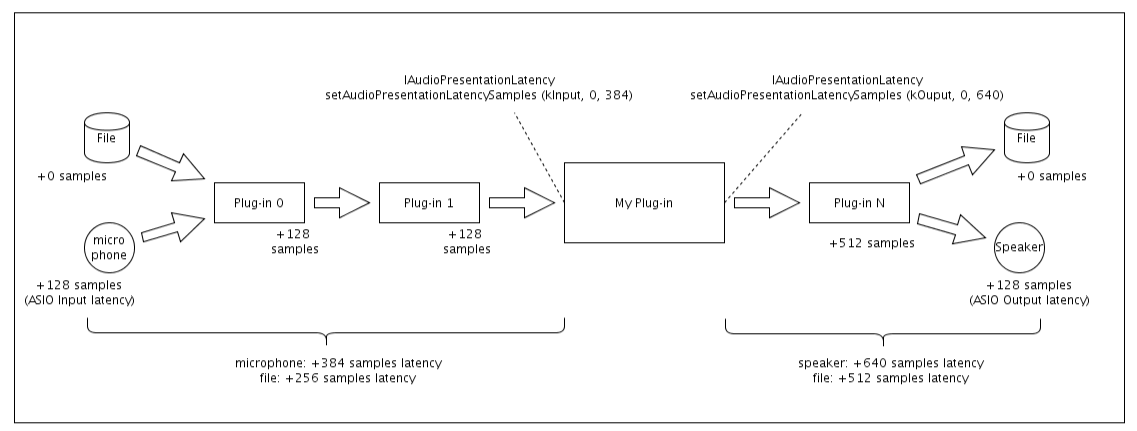- Sep 24, 2023
- 2
- 0
- 6
Hi, first post, great forum! I'll try to be as brief as possible.
My goal is to know what CPU I need.
I have difficulties understanding the impact of base clock and boost clock in my use case which is:
- DSP software development (Digital signal processing, I'm developing software synthesizers): This is an application which is highly reliant on real time computing. You hit a key on the musical keyboard or use a microphone to input sound and everything that comes after that can only be calculated in a serial manner. The DAW (Digital audio workstation, software to produce and mix music) takes it in and sends it inside a track (or channel) through different plug ins that each have to "wait" for the result of the calculations of the earlier stages. Everything that happens inside said track can not be distributed on different cores.

those latency figures can be halved in a modern computer provided it has excellent single core performance. One sample here means one tick of the sampling clock (I'm using 96k)
BUT: Near silent operation is also very important because the PC will be located in a music studio.
And MT performance is also important because a normal project in my case takes 12-15 tracks and those tracks can be placed on different cores by the DAW.
priorities are as follows:
Stabillity: 100%
near silent op: 100%
ST perf.: 99%
MT perf.: 80%
GPU power: 10% (no gaming, iGPU is perfectly fine but will add to CPU temp)
While prototyping my DSP stuff I sometimes have to scale up number of voices and/or sampling rates to ridiculous numbers in order to be able to estimate efficiency of the code. So I'll always hit the ceiling of ST performance no matter what. In these moments I'll need the boost clock I guess. The problem here is that I don't know how long that boost clock can last. And if it can last forever provided the CPU temps are ok, what is the significance of the base clock figure?
thanks a lot for reading and thanks in advance for any tip, pointer, knowledge or reference you can provide me. I'll leave it to that for now but there are a lot of further questions.
Cheers.
My goal is to know what CPU I need.
I have difficulties understanding the impact of base clock and boost clock in my use case which is:
- DSP software development (Digital signal processing, I'm developing software synthesizers): This is an application which is highly reliant on real time computing. You hit a key on the musical keyboard or use a microphone to input sound and everything that comes after that can only be calculated in a serial manner. The DAW (Digital audio workstation, software to produce and mix music) takes it in and sends it inside a track (or channel) through different plug ins that each have to "wait" for the result of the calculations of the earlier stages. Everything that happens inside said track can not be distributed on different cores.
those latency figures can be halved in a modern computer provided it has excellent single core performance. One sample here means one tick of the sampling clock (I'm using 96k)
BUT: Near silent operation is also very important because the PC will be located in a music studio.
And MT performance is also important because a normal project in my case takes 12-15 tracks and those tracks can be placed on different cores by the DAW.
priorities are as follows:
Stabillity: 100%
near silent op: 100%
ST perf.: 99%
MT perf.: 80%
GPU power: 10% (no gaming, iGPU is perfectly fine but will add to CPU temp)
While prototyping my DSP stuff I sometimes have to scale up number of voices and/or sampling rates to ridiculous numbers in order to be able to estimate efficiency of the code. So I'll always hit the ceiling of ST performance no matter what. In these moments I'll need the boost clock I guess. The problem here is that I don't know how long that boost clock can last. And if it can last forever provided the CPU temps are ok, what is the significance of the base clock figure?
thanks a lot for reading and thanks in advance for any tip, pointer, knowledge or reference you can provide me. I'll leave it to that for now but there are a lot of further questions.
Cheers.


